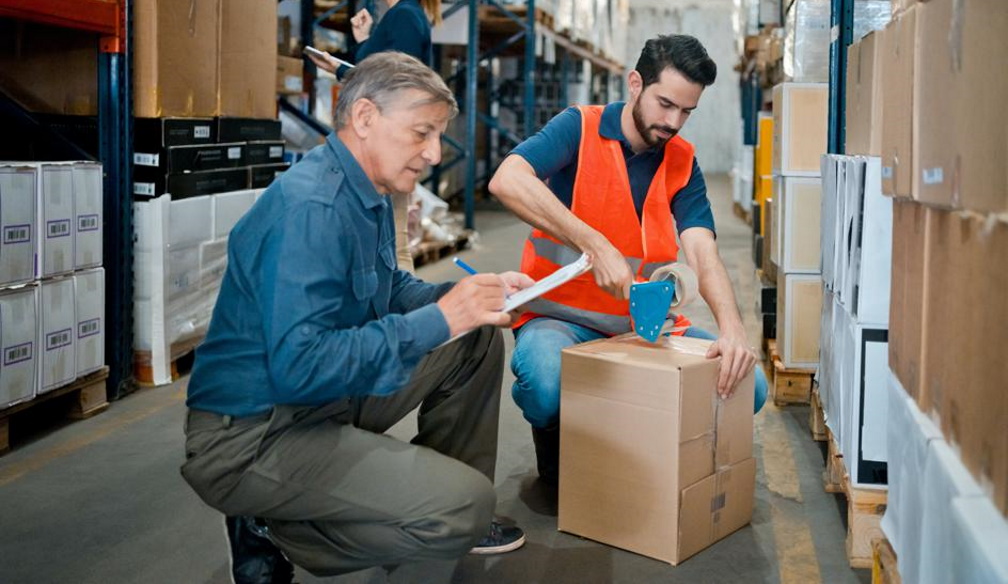Everything You Need to Know About Stretch Films

Concerned about product damage in shipping? Using stretch film to secure your products and pallets against shipping accidents and environmental damage is a good investment.
Your products will arrive safely at their destination, and they’re protected if they need to be stored. Will products be stored outdoors? In that case, you can choose a film containing an Ultra Violet Inhibitor (UVI) to protect against sun damage.
You can use stretch film to unitize products and cartons, as well as wrap pallets. It stabilizes loads, so they don’t shift when they’re moved.
However, stretch films are available at several price points, so how do you choose the best for your applications?
Choosing the best stretch film for your needs
Stretch film is popular because it’s a cost-effective form of packaging. Consider your products, how they’re packaged, their weight, and specific requirements when choosing the best stretch film.
You have a choice of film in different forms and grades, both as a hand stretch wrap, which is used manually; and a machine stretch film, which is used in machines, such as pallet stretch wrappers.
Popular types of stretch film include:
-
Cast stretch wrap: the most popular and most affordable type of stretch film.
-
Blown stretch wrapping film: thicker than cast stretch wrap; suits awkwardly-shaped, sharp-edged products.
-
Coloured film: hides products (to reduce pilfering), and aids in load identification.
-
Pre-stretch film: reduces costs and requires less energy to wrap pallets.
-
UVI film: designed for materials which will be stored in areas where sunlight may cause wrap degradation and product damage.
Let’s look at several of these products and their applications.
Cast stretch wrap: clear wrap to secure products
More cast stretch wrapping film is manufactured than any other type, because it’s the most popular type of wrapping film and is used in many industries. Not only is it cost-effective, it has advantages including:
-
Transparency: you can see print on cartons clearly under the wrap.
-
Great cling. It’s available in two forms: as a one-sided cling wrap, so that wrapped products can be stored without clinging to each other. It’s also available as a differential cling wrap, with one side of the film offering more cling than the other.
-
Quietness when rolled and stretched. It’s also highly elastic, offering up to a 300% stretch.
-
Recyclability. It’s usually manufactured of low-density polyethylene (LLDPE), which makes it recyclable.
Blown stretch wrap: suitable for heavy-duty use
You can easily tell blown stretch wrap film from cast stretch wrap because it’s less transparent. It’s manufactured with a different process, and is much stronger than cast stretch.
Blown stretch film is available in several grades (thicknesses) and its general advantages include:
-
Durability, with good puncture and tear resistance: this makes it more suitable for heavier loads.
-
A higher degree of “memory” when stretched. More force is needed to apply it, then it shrinks against the pallet, offering a tight, secure hold. This offers greater assurance that a heavy load won’t shift.
-
A one-sided cling, which ensures that pallets won’t stick to each other. There’s less potential for damage, making blown stretch film the best choice for expensive loads.
-
Better stretch. Blown film has greater elongation potential than cast; it’s often possible to use a thinner film at a lower cost, with the same properties.
Coloured stretch film offers added security for your products
Coloured stretch film is available in a range of colours; black is the most common. If you’re shipping expensive products, a coloured film has advantages over cast stretch and blown stretch films: there’s less chance of pilfering.
Some advantages of coloured stretch films:
-
In high-volume operations, coloured films offer easier product coding, for ease in shipping and dating your inventory.
-
Product tampering is easily recognizable: coloured film reveals any damage to the film.
Pre-stretched film: easy to apply, and reduces costs
Why choose a pre-stretched film?
This type of film requires less energy to use. It’s already been stretched during manufacture, so that even if it’s applied manually, it offers a tighter wrap, which ensures a more secure load.
The advantages of this type of film include:
-
Cost savings. Manufacturers suggest that less pre-stretched film is required: up to 50% less.
-
Good memory. Once stretched over a load, the pre-stretched film shrinks, which delivers more stability, reducing the potential for damage.
-
Durability and strength, with good puncture resistance. It also copes well with extremes of temperature, as well as with situations in which products must be unloaded and reloaded frequently.
How to choose the best stretch film for your applications
With so many types and grades of stretch film available, choosing the best can be a challenge. Get expert advice from a packaging company, and test several brands before choosing.
However, no matter which type of film you choose, you know that stretch film will secure and protect your products.

















